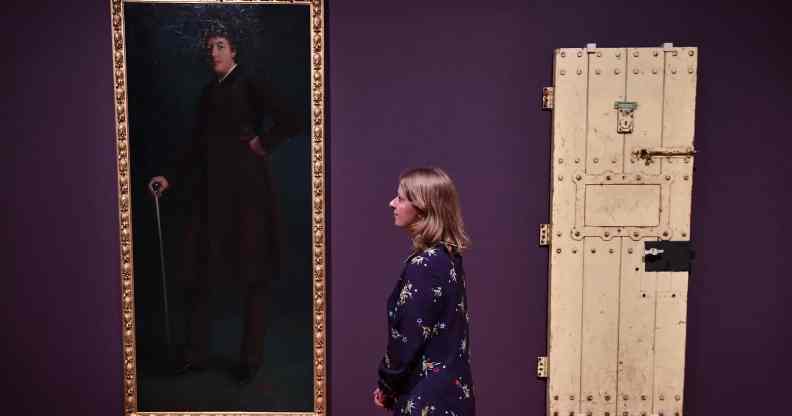Door of Oscar Wilde’s prison cell takes centre stage in Tate’s queer art celebration

The door of Oscar Wilde’s Reading Gaol prison cell will go on display this week as part of an exhibition of Queer British Art.
The Tate Britain’s Queer British Art exhibition opens on Wednesday, marking the 50th anniversary of the decriminalisation of homosexuality in England and Wales.
The exhibition includes some of the most remarkable depictions of sexuality in works from 1861 up until 1967, when homosexuality was still a crime.
The Tate explained: “Many of the works that will be displayed were produced in a time when the terms ‘gay’, ‘lesbian’, ‘bisexual’ and ‘trans’ had little public recognition.”
“It presents work from the abolition of the death penalty for sodomy in 1861 to the passing of the Sexual Offences Act in 1967 – a time of seismic shifts in gender and sexuality that found expression in the arts as artists and viewers explored their desires, experiences and sense of self.”

Henry Scott Tuke, ‘The Critics’, 1927. Courtesy of Leamington Spa Art Gallery & Museum
At the centre of the exhibition are a number of items relating to Oscar Wilde.
The famous playwright and poet, who had a string of male lovers, was famously arrested and sent to Reading Gaol in 1895 for gross indecency with men, under the UK’s historic anti-gay laws.
Wilde served two years behind bars in Reading Gaol, penned the work ‘De Profundis’ from behind bars.
His time in prison was the basis for his final ever work ‘The Ballad of Reading Gaol’. a long poem that reflects on the harsh rhythms of his daily prison life.
The Tate exhibition pays tribute to Wilde, displaying the original prison door from his cell in Reading Gaol, along with a portrait that was gifted to him by his wife as a wedding present.
A release adds: “The exhibition will illustrate the ways in which sexuality became publically defined through the work of sexologists such as Henry Havelock Ellis, campaigners such as Edward Carpenter and will also look at the high profile trials of Oscar Wilde and Radclyffe Hall. Objects on display will include the door from Wilde’s prison cell, Charles Buchel’s portrait of Radclyffe Hall and erotic drawings by Aubrey Beardsley.”

Simeon Solomon, ‘Sappho and Erinna in a Garden at Mytilene’, 1864
“Work from 1861 to 1967 by artists with diverse sexualities and gender identities will be showcased, and will range from covert images of same-sex desire such as Simeon Solomon’s Sappho and Erinna in a Garden at Mytilene 1864 through to the open appreciation of queer culture in David Hockney’s Going to be a Queen for Tonight 1960.
“A highlight of the exhibition will be a section focusing on the Bloomsbury set and their contemporaries – an artistic group famous for their bohemian attitude towards sexuality. The room will include intimate paintings of lovers, scenes of the homes artists shared with their partners and large commissions by artists such as Duncan Grant and Ethel Walker.
“In contrast to the bleak outlook from the courtroom prior to 1967, queer culture was embraced by the British public in the form of theatre.
“From music hall acts to costume design, British theatre provided a forum in which sexuality and gender expression could be openly explored. Striking examples on display will include photographs of performers such as Beatrix Lehmann, Berto Parsuka and Robert Helpmann by Angus McBean, who was jailed for his sexuality in 1942, alongside stage designs by Oliver Messel and Edward Burra.
“Theatrical cards of music hall performers such as Vesta Tilley (whose act as ‘Burlington Bertie’ had a large lesbian following) will also be featured, as well as a pink wig worn in Jimmy Slater’s act ‘A Perfect Lady’ from the 1920s.”
Related: National Trust to explore the UK’s hidden gay history

